LDH: lactate dehydrogenase; EC 1.1.1.27 ; (S)-lactate:NAD oxidoreductase
Reversibly catalyses the reaction (S)-lactate + NAD  pyruvate + NADH + H+
pyruvate + NADH + H+
There are two genes that code for subunits composing LDH. In humans, they are named LDHA gene and LDHB gene.
LDHA geneLocated in chromosome 11, locus 11p15.1 |
LDHB geneLocated in chromosome 12, locus 12p12.1 |
transcription + translation |
transcription + translation |
polypeptide chain "A" or "M" 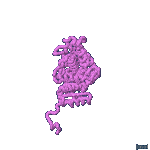 |
polypeptide chain "B" or "H" 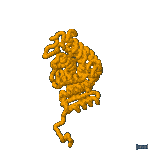 |
Both polypeptides, "A" or "M" and "B" or "H", are very much alike in their structure, but they have some differences in their sequence:

As a consequence, their physicochemical properties are a little different, among them the isoelectric point and the electric charge.
The LDH enzyme is active as a tetramer: it is formed by 4 subunits, which may be either M or H type. It is, hence, possible for them to associate in 5 different combinations:
M4 |
M3H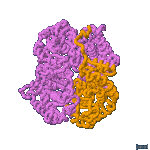 |
M2H2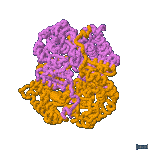 |
MH3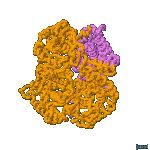 |
H4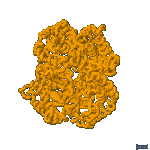 |
which constitute the 5 isoenzymes of LDH.
Depending on one cell expressing in a higher or lower degree each one of the two genes, different relative amounts of the A and B polypeptides will be synthesised, and so the relative abundance of the 5 isoenzymes will be different.
You can try changing the relative expression of the LDHA and LDHB genes (by sliding the control) and observe the result:
|
higher expression of LDHA
higher expression of LDHB
Amounts of each isoenzyme:
M4
M3H
M2H2
MH3
H4
|
Examples: In
and
the LDHA gene is predominantly expressed, which codes for subunit M.
|
Angel Herráez. Part of the Biomodel.uah.es website
Animated images were produced with Jmol in Proteopedia (2FM3.pdb)
Sequences were obtained from UniProtKB; alignment was computed at T-Coffee and plotted using BoxShade (ExPASy)